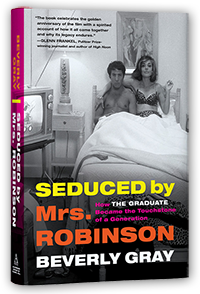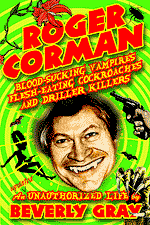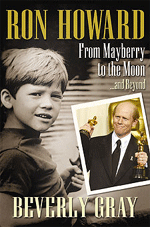So they’ve had the guts to remake Rosemary’s Baby as a miniseries. And from what I’ve heard, it’s
pretty good. The setting has been moved
to Paris, a city which has its visually spooky side. And the acting is supposed
to be fine. But I can’t imagine this Rosemary’s
Baby ever having the impact of Roman Polanski’s 1968 original.
Rosemary’s Baby of
course started life as a novel by Ira Levin. It was so original, and so
audaciously scary, that publisher Bennett Cerf of Random House considered it
perhaps TOO suspenseful. Maybe, he suggested, Levin should make clear that the Satanic
takeover at the novel’s end was all just a bad dream.
The novel was a 1967 bestseller, and when the film version
debuted the following year, it too
quickly became a sensation. Partly the time was ripe: moviegoers in 1968
had (in the words of Shakespeare’s Macbeth) “supped full with horrors.” Many
remembered the assassination of President John F. Kennedy in 1963. When the
film was released on June 12, 1968, only two months had passed since the
slaying of Dr. Martin Luther King Jr. in Memphis, precipitating nation-wide
riots. And Rosemary’s Baby opened
just six days after Robert F. Kennedy was gunned down in Los Angeles. America,
it seemed, was ripe for accepting a world being usurped by demonic powers.
And director Polanski was uniquely qualified to handle such
strong material. The shocking slaughter of his wife Sharon Tate, along with
their unborn baby, by members of the Manson clan was still more than a year
off. But Polanski was also a Holocaust survivor. In the late 1930s, as a small
child, he was living with his family in the Polish city of Krakow. When the Nazis moved in, he was
forced out of school and into a Jewish ghetto. His parents were taken away and
killed; he himself survived by pretending to belong to a Roman Catholic family.
Later he roamed the countryside on his own, trying to elude German soldiers
taking potshots at the fleeing boy. So Polanski had, along with impressive
filmmaking skills, a strong personal identification with a God-is-dead world.
I’ve not always been a fan of Mia Farrow, and her
current-day behavior strikes me as more than a bit batty, but she plays the
passive, put-upon Rosemary with stunning conviction. As much as her acting it’s
her physical presence that sells the story. She’s so pale, so thin, so apparently
fragile: the lopping off of her blonde tresses into a very short Vidal Sassoon bob
midway through the film completes our sense of her as the ultimate victim.
(Frankly, I doubt that the statuesque Zoe Saldana could ever spark our
imagination in the way that the cadaverous Farrow does.) I don’t love everything about the movie --
the big Satanic rape scene is definitely heavy-handed – but the sinister
presence of John Cassavetes, Sidney Blackmer, and the Oscar-winning Ruth Gordon
can’t be beat.
Much of the power of Levin’s story comes from the mysteries we
associate with pregnancy. Every woman who’s been with child knows how easy it
is to be overawed by the strange things happening inside her. Body parts change
size and shape. Emotions swing wildly. Doctors and other traditional allies
sometimes don’t seem to have her best interests at heart. She’s eating (and
sleeping and breathing) for two, but the final outcome remains very much in question.
Until, of course, the baby arrives and demands to be loved. That’s why films
about pregnancy (like Rosemary’s Baby and
even a Roger Corman cheapie like The
Unborn) grab hold and don’t let go.
This post hails the
arrival of Mila Danielle Grayver on May 19, 2014, following a perfectly uneventful
pregnancy. Family members are thrilled to welcome Mila into their inarguably
normal home, which is in Manhattan
Beach, not Manhattan – and therefore nowhere near the Dakota.









This is fabulous-so creative! Love the tie in with the new baby!
ReplyDeleteThanks, Heath. It was fun to salute the past, and the future!
ReplyDeleteCongratulations to the new parents!
ReplyDeleteThe new Rosemary's Baby did not go over all that well - at least not in the reviews I read online. Stretching the story to four hours and making the leads hot young Hollywood types certainly didn't draw me in.
I want to add one name to the 1968 movie's roll call - producer William Castle - here doing a bang up job without a single promotional gimmick in sight. He also figures in a neat cameo - when Rosemary is in the phone booth - and we see what certainly appears to be conspirator doctor Ralph Bellamy outside the booth - and it is him from the back - but after a movie magic switcheroo - it turns out to be William Castle, who may have had a devilish twinkle in his eye when he created movie gimmicks like Emerg-O and Percept-O but certainly wasn't a minion of old scratch in this movie...
Thanks, Mr. C. I should have mentioned the unforgettable William Castle in connection with Rosemary's Baby, but the cameo is news to me! I love it!
ReplyDeleteA slightly belated welcome to the world, Mila Danielle! A gorgeous name for a gorgeous baby, destined to become a movie fan early on. And great thoughts on Rosemary's Baby. Mia is a tragic spectacle now, but she was luminous in that haunting film from a different era. Who can forget the stark, blood-red cover line on the Time magazine Rosemary leafs through in Dr. Sapirstein's office--"Is God Dead?" That was real, the controversial April 8, 1966 issue was published to great outcry.
ReplyDeleteI really appreciate hearing from you, Marlene. Do write again!
ReplyDelete